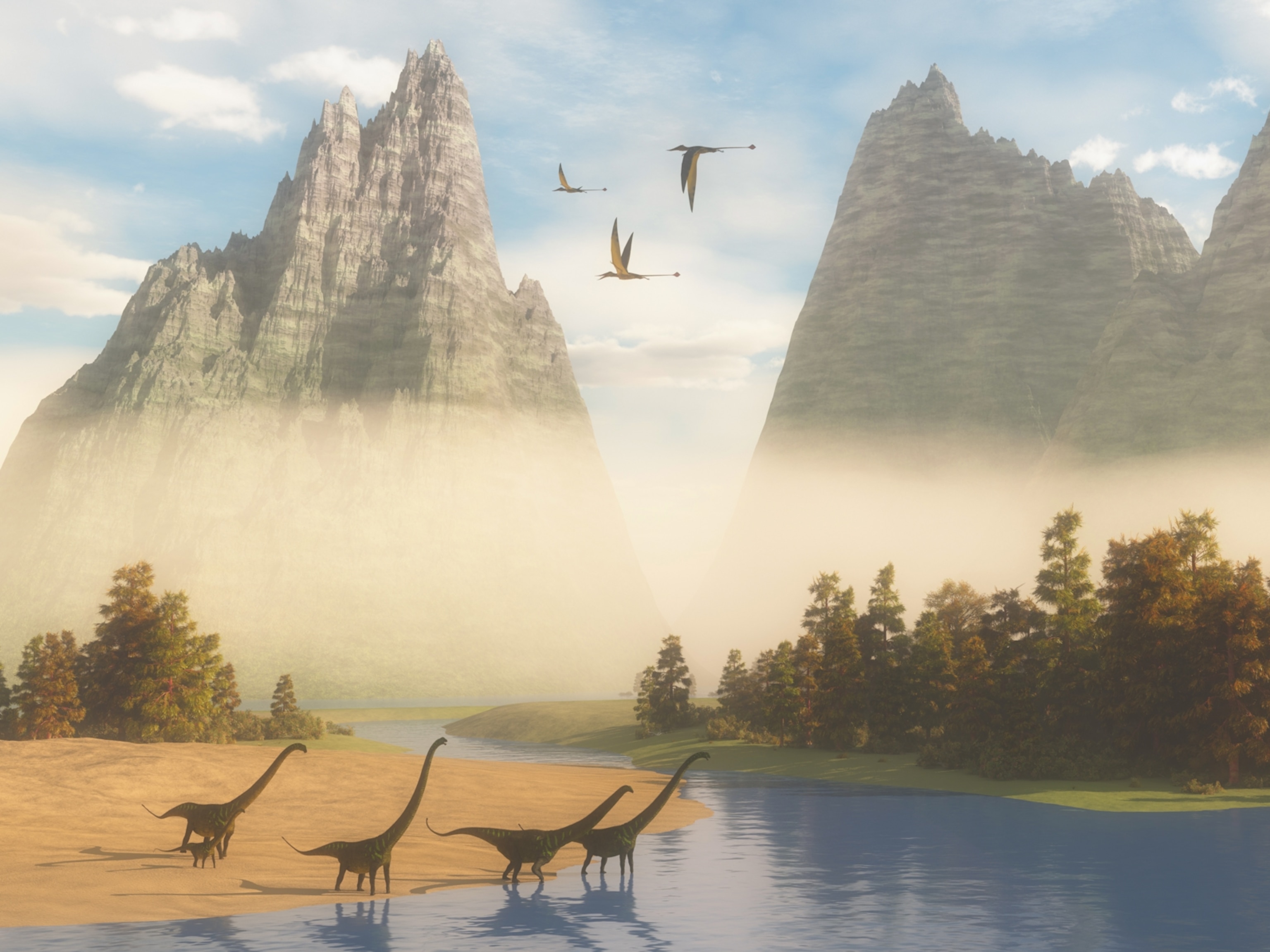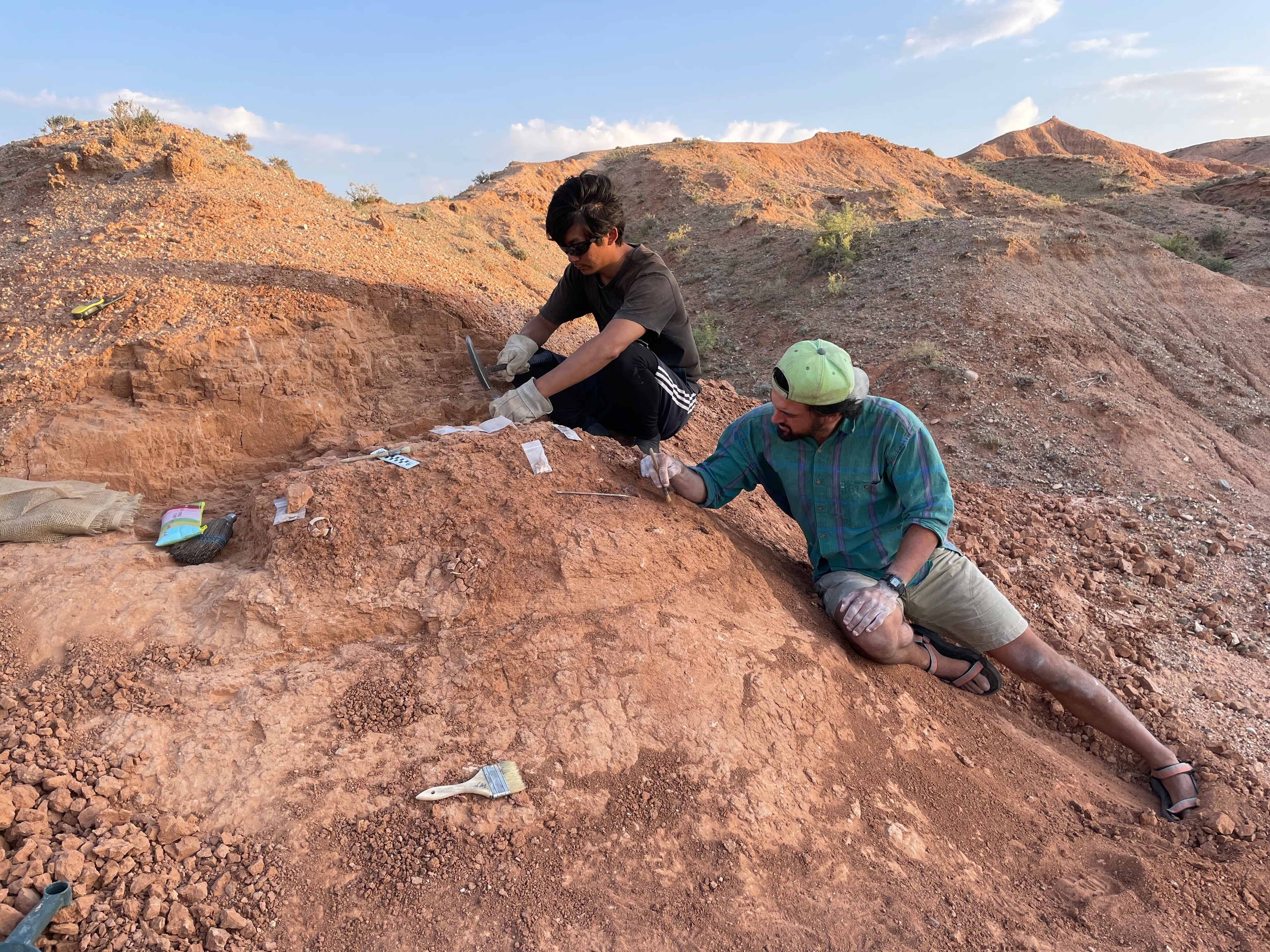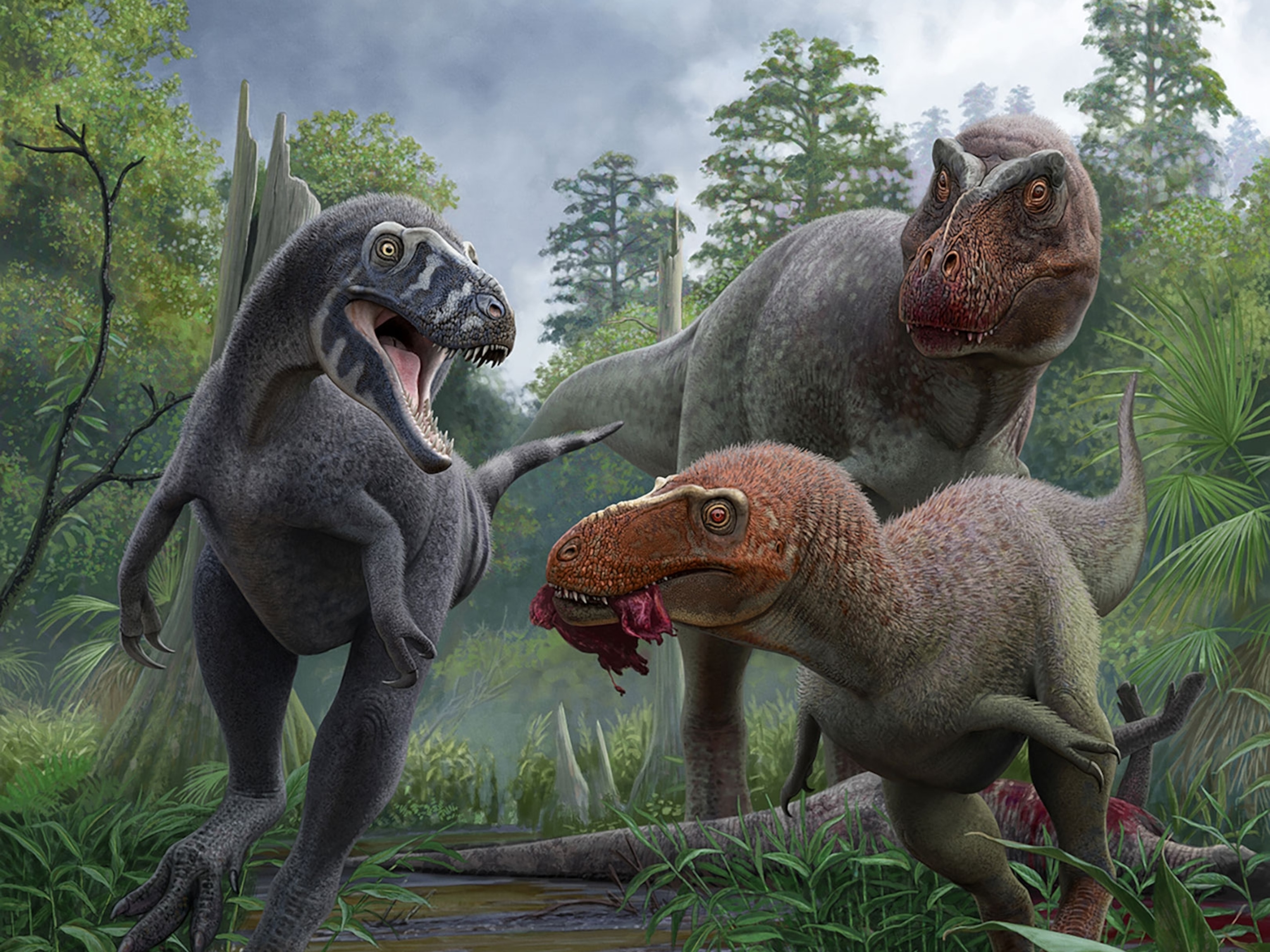Precambrian time covers the vast bulk of the Earth's history, starting with the planet's creation about 4.5 billion years ago and ending with the emergence of complex, multicelled life-forms almost four billion years later.
What Was Happening on Earth at This Time
The Precambrian is the earliest of the geologic ages, which are marked by different layers of sedimentary rock. Laid down over millions of years, these rock layers contain a permanent record of the Earth's past, including the fossilized remains of plants and animals buried when the sediments were formed.
The Earth was already more than 600 million years old when life began. The planet had cooled down from its original molten state, developing a solid crust and oceans created from water vapor in the atmosphere. Many scientists think these primordial seas gave rise to life, with hot, mineral-rich volcanic vents acting as catalysts for chemical reactions across the surface of tiny water bubbles, which led to the first cell membranes. Other bubbles are thought to have formed self-replicating substances by attracting chemicals from around them. Over time the two combined to produce energy-using, living cells.
The earliest living organisms were microscopic bacteria, which show up in the fossil record as early as 3.4 billion years ago. As their numbers multiplied and supplies of their chemical fuel were eaten up, bacteria sought out an alternative energy source. New varieties began to harness the power of the sun through a biochemical process known as photosynthesis—a move that would ultimately lead to simple plants and which opened the planet up to animal life.
Some three billion years ago, the Earth's atmosphere was virtually devoid of oxygen. At about 2.4 billion years ago, oxygen was released from the seas as a byproduct of photosynthesis by cyanobacteria. Levels of the gas gradually climbed, reaching about one percent around two billion years ago. About 800 million years ago, oxygen levels reached about 21 percent and began to breathe life into more complex organisms. The oxygen-rich ozone layer was also established, shielding the Earth's surface from harmful solar radiation.
Unfamiliar Life-Forms
The first multicelled animals appeared in the fossil record almost 600 million years ago. Known as the Ediacarans, these bizarre creatures bore little resemblance to modern life-forms. They grew on the seabed and lacked any obvious heads, mouths, or digestive organs. Fossils of the largest known among them, Dickinsonia, resemble a ribbed doormat. What happened to the mysterious Ediacarans isn't clear. They could be the ancestors of later animals, or they may have been completely erased by extinction.

The earliest multicelled animals that survived the Precambrian fall into three main categories. The simplest of these soft-bodied creatures were sponges. Lacking organs or a nervous system, they lived by drawing water through their bodies and filtering out food particles. The cnidarians, which included sea anemones, corals, and jellyfish, had sac-like bodies and a simple digestive system with a mouth but no anus. They caught food using tentacles armed with microscopic stinging cells. The third group, the annelids, or segmented flatworms, had fluid-filled body cavities and breathed through their skins.
It's thought the final stages of Precambrian time were marked by a prolonged global ice age. This may have led to widespread extinctions, mirroring the bleak endings to the geologic periods that followed.






